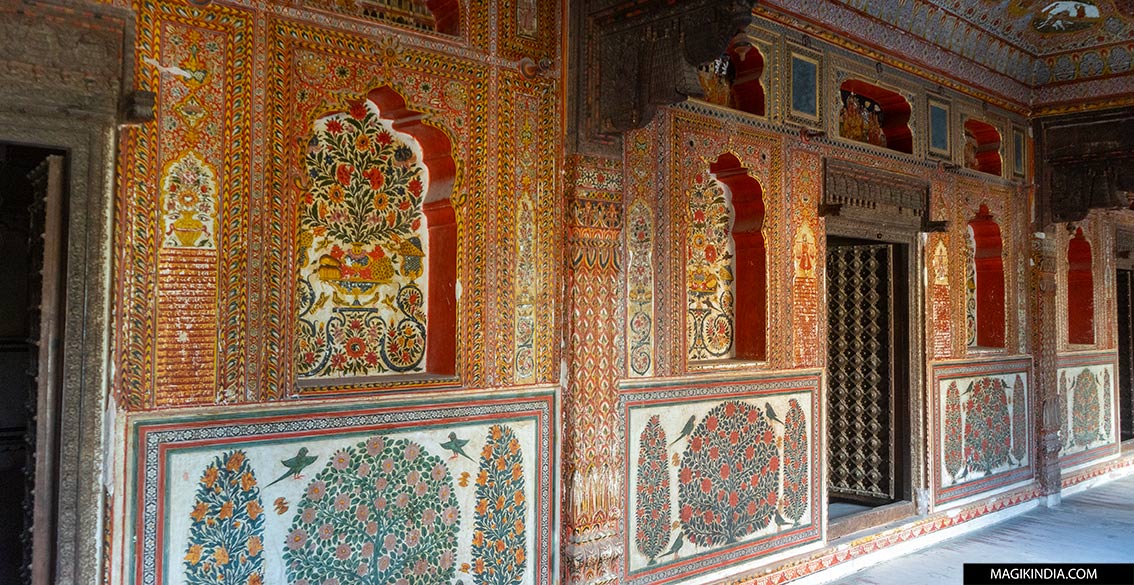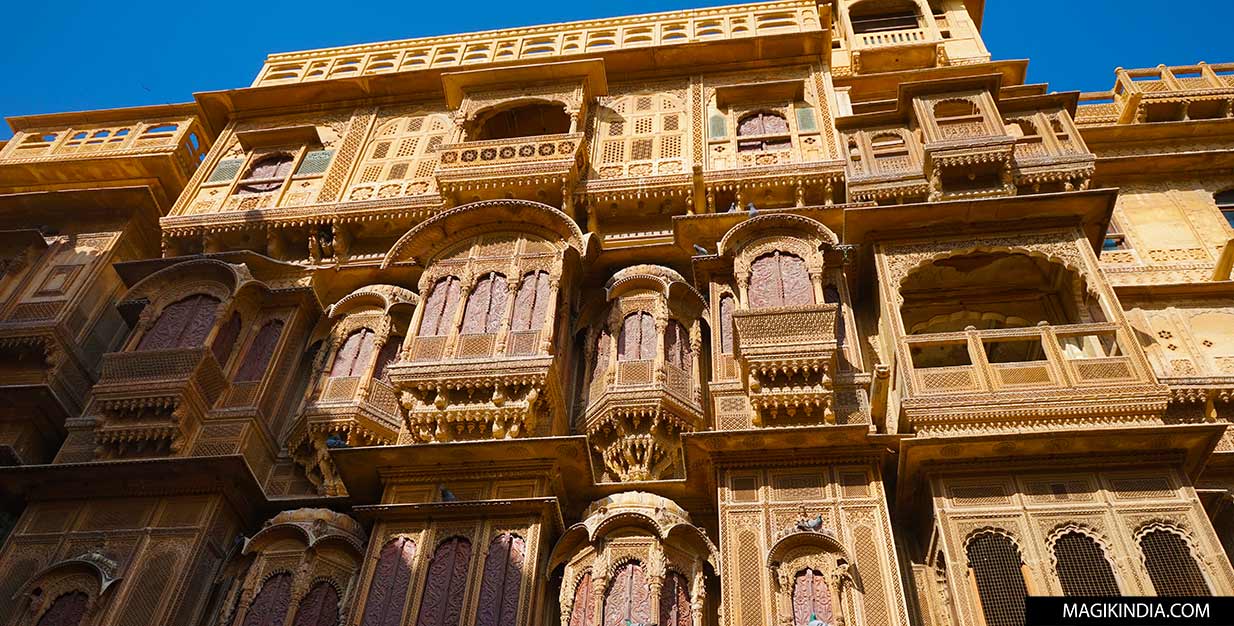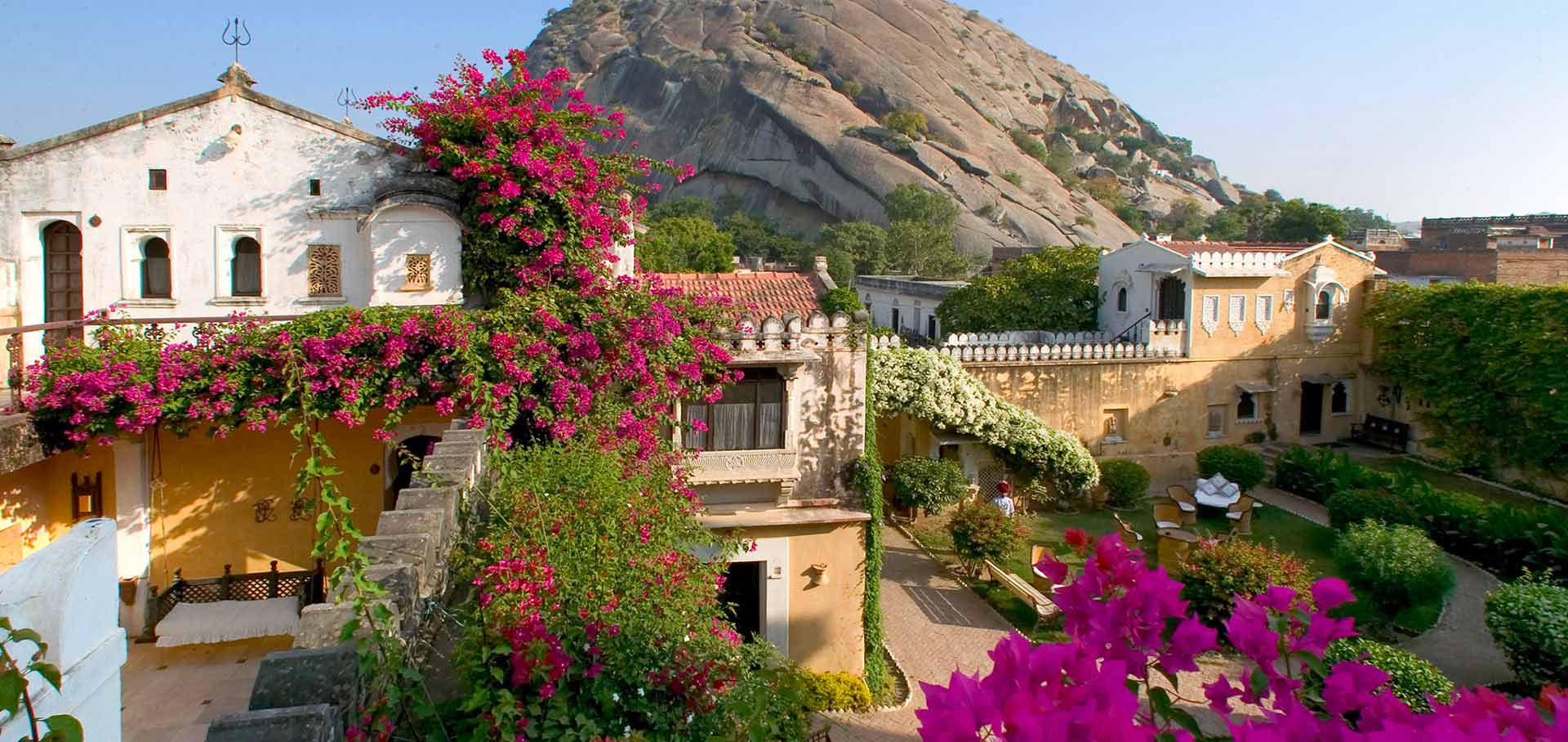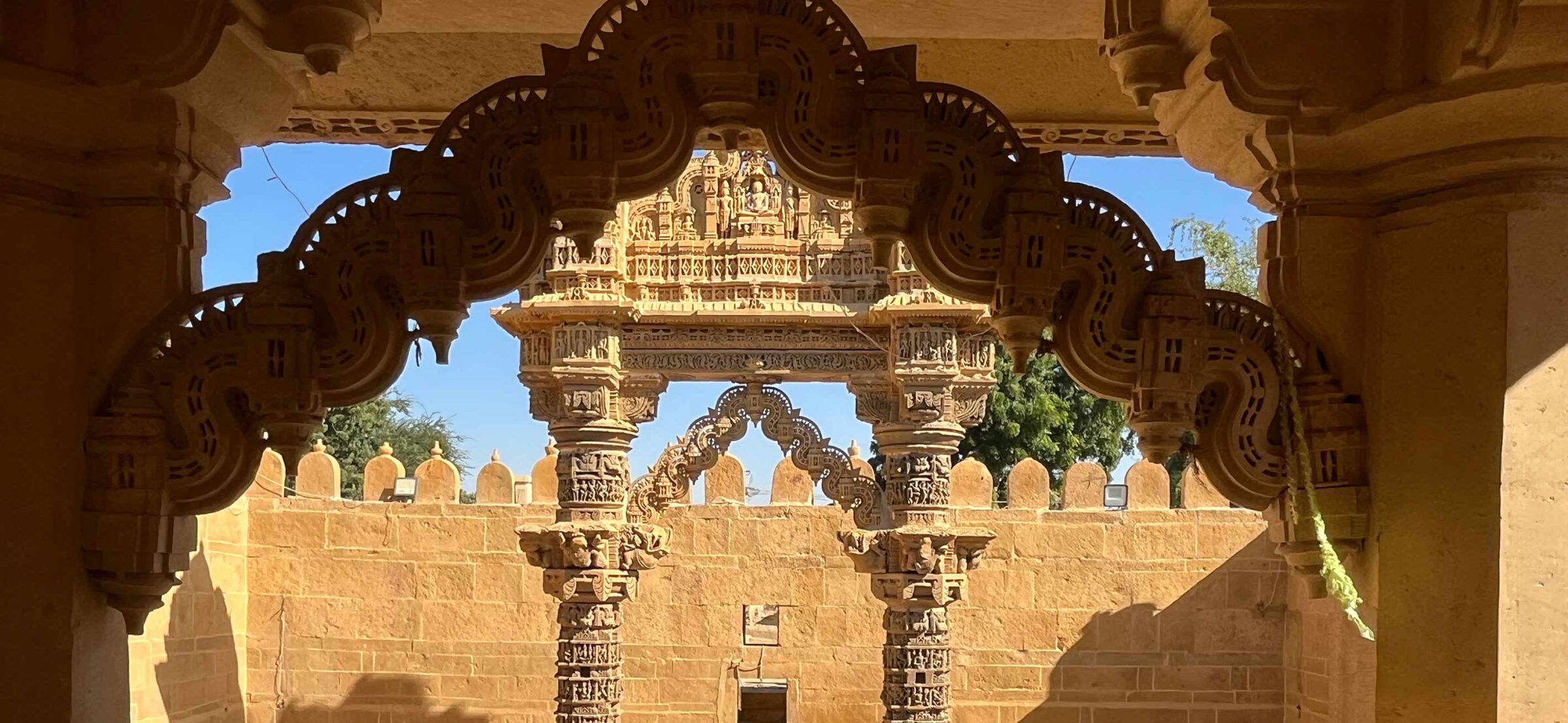
Jaisalmer and its fabulous Jain temples
From the 8th century onwards, Jainism established itself as a powerful cultural force under the patronage of Rajput rulers. In Jaisalmer, it was under the rule of the Bhattis that the Jain faith flourished. Due to its location along ancient trade routes, Jaisalmer provided a favorable environment for the economic development of wealthy Jain merchants who, with the complicity of the rulers, displayed their prosperity by commissioning remarkable derasars in the golden city.
The 7 Derasars of Jaisalmer Fort
When you arrive in Jaisalmer, the complex of seven Svetambara Jain temples nestled within the Jaisalmer Fort is usually the first visit you do.
Built between the 12th and 15th centuries CE, each of these buildings is a work of art in its own right, exquisitely carved from yellow sandstone, Jaisalmer’s architectural signature.
These derasars are dedicated to seven different Tirthankaras, the enlightened masters of the Jain faith: Parsvanatha, Sambhavanatha, Shitalanatha, Shantinatha, Kunthunatha, Chandraprabha, and Rishabhanatha.
1 – Parsvanatha
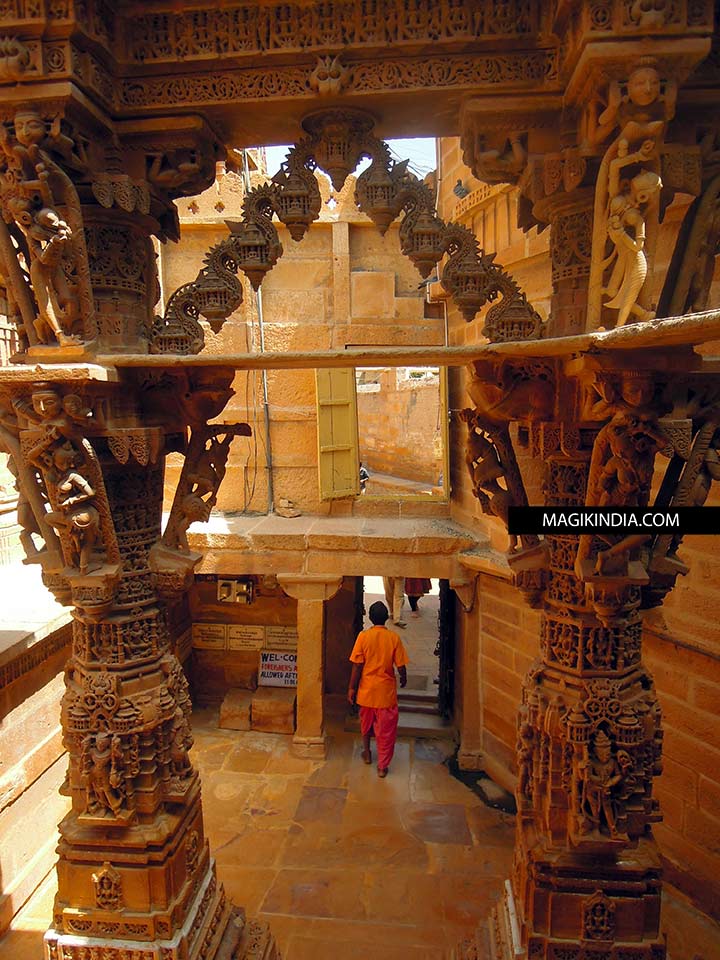
This first derasar is dedicated to Parshvanatha, the 23rd Tirthankara, the one who has the power to remove obstacles from the faithful.
The temple is entered through a magnificent torana, an arch finely carved with apsara nymphs in voluptuous positions.
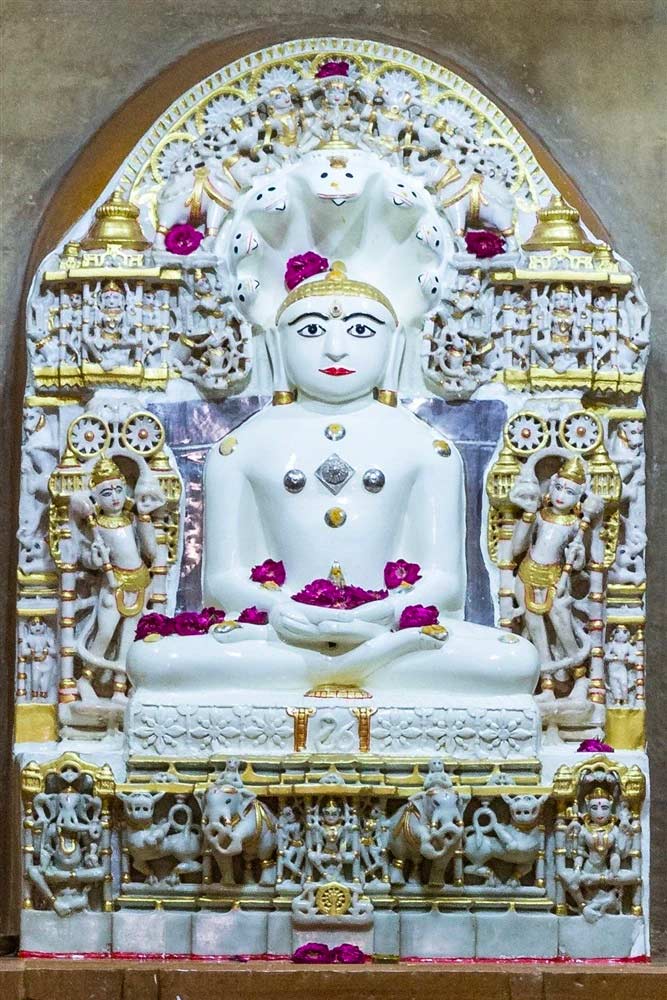
The shrine houses the idol of Parshvanatha coated with a mixture of white pearl powder which gives it a milky appearance.
Parshvanatha is protected by a multi-headed serpent, unfurled like an umbrella, which is how this saint is recognized. His iconography is usually accompanied by Dharnendra and Padmavati, the serpent god and goddess of Jainism.
2 – Sambhavnath
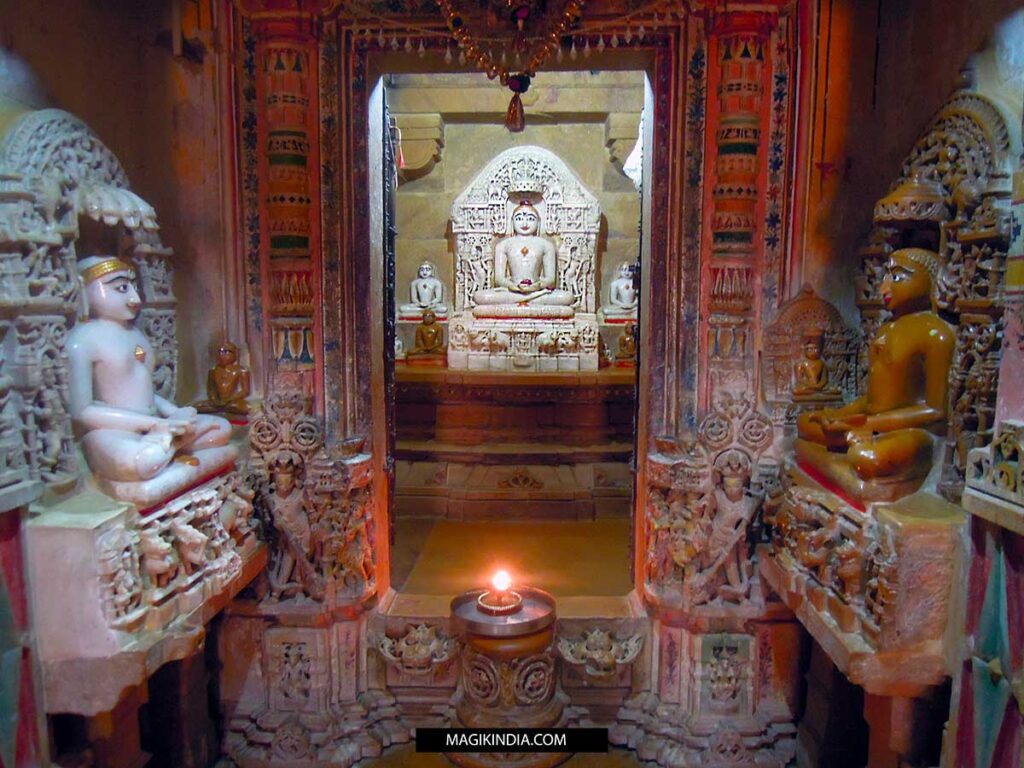
We cross a courtyard where Jain officiants prepare sandalwood paste in stone mortars. Then a dark room leads us to the derasar of Sambhavnath, the third Jain Tirthankara, whose emblem is a horse.
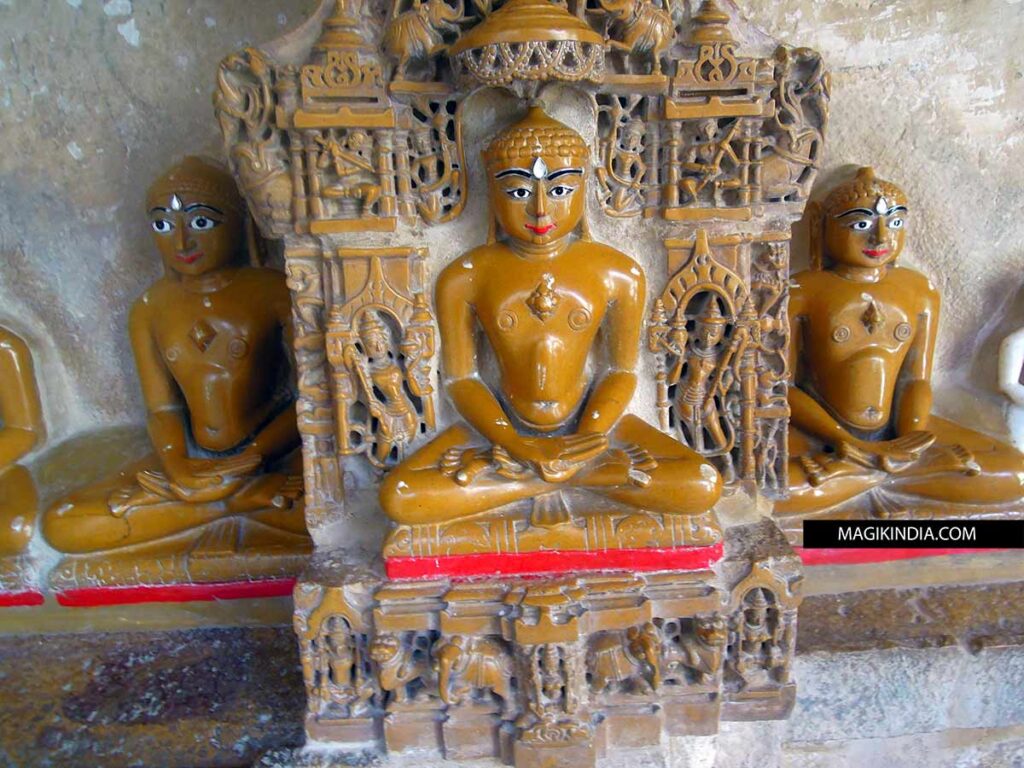
This temple is believed to have been built in the 16th century CE by Askaran Chopra, a wealthy Jain merchant. It houses over 600 yellow sandstone Sambhavnath idols and also an underground library containing about a thousand valuable ancient manuscripts.
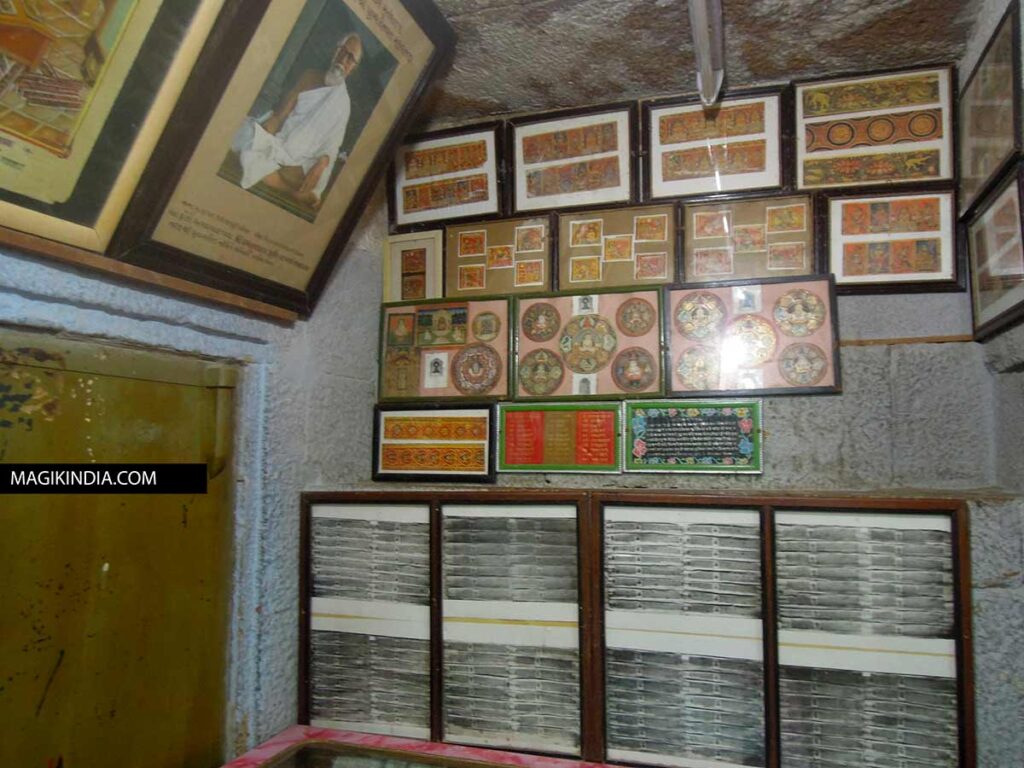
3 – Chandraprabha
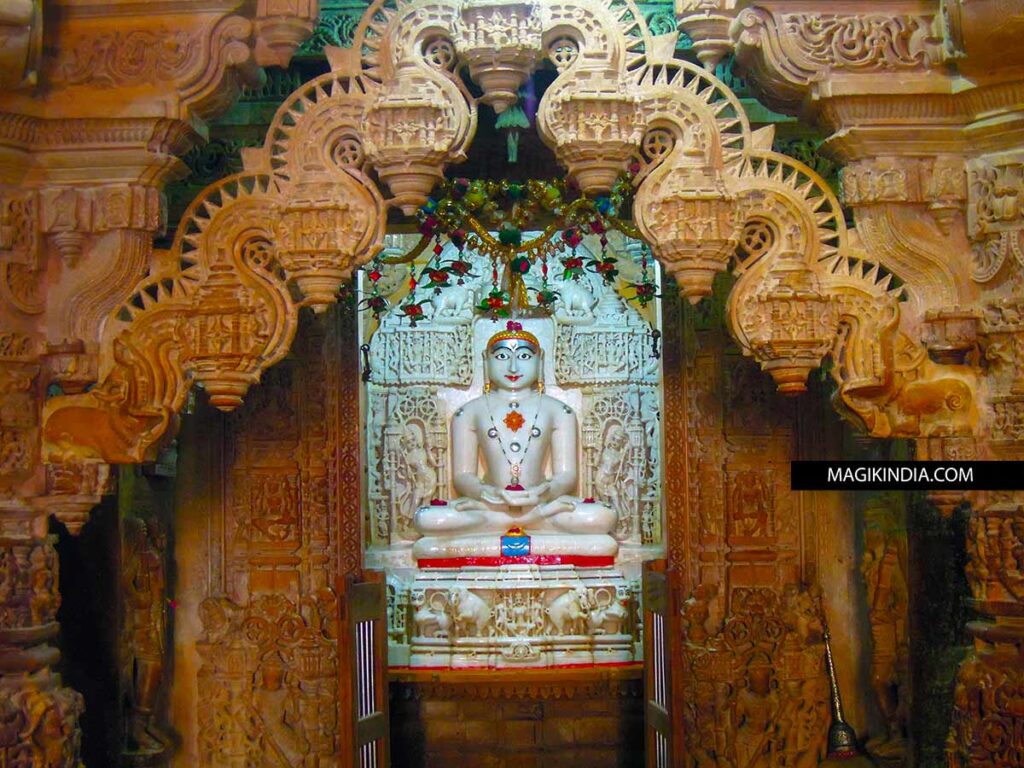
The Chandraprabha Temple, dedicated to the 8th Tirthankara, was built in the 16th century CE on a raised platform. The white marble idol is represented by a crescent moon symbol (“chandra”) at its feet. The pillars of its mandapa are intricately carved.
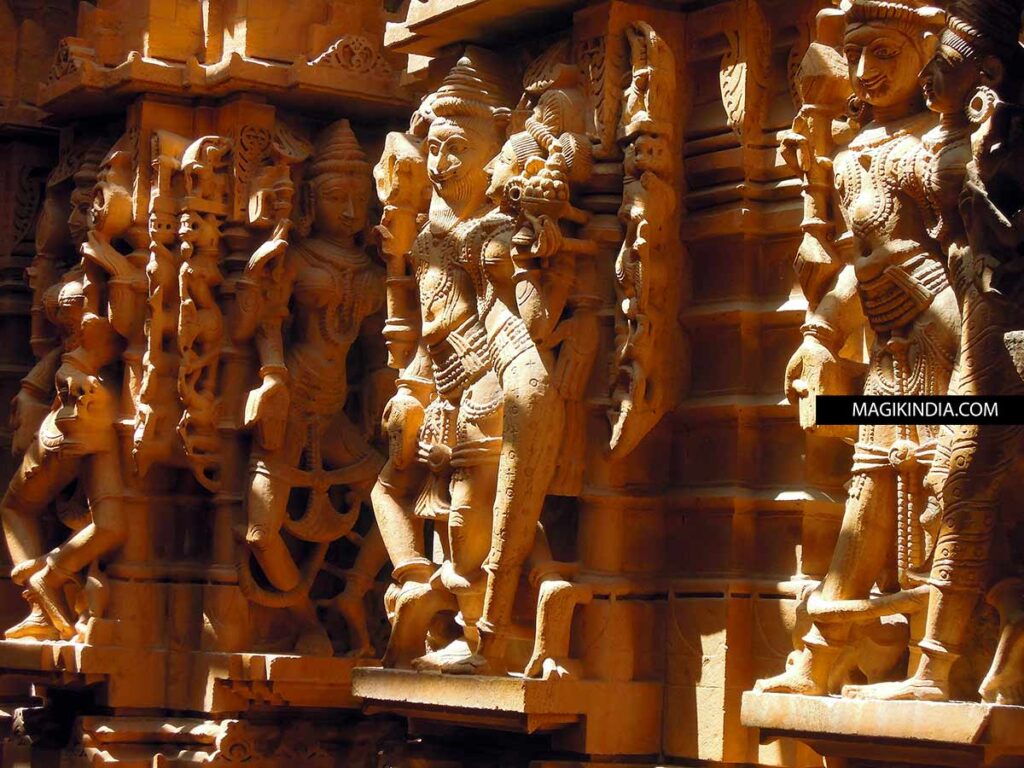
4 – Rishabhnath
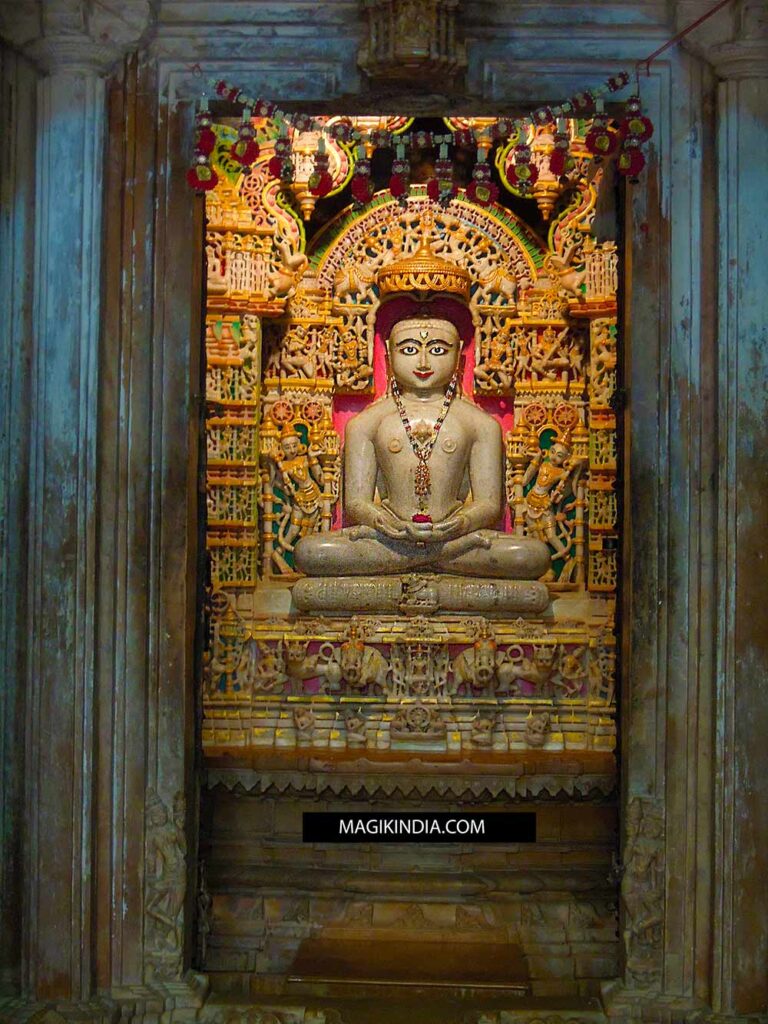
This beautifully decorated temple is dedicated to Rishabhanatha, the first tirthankara. It is believed to have been built in the 12th century CE, making it one of the oldest buildings in Jaisalmer. Rishabhanatha’s symbol is a bull.
5 – Shitalnath
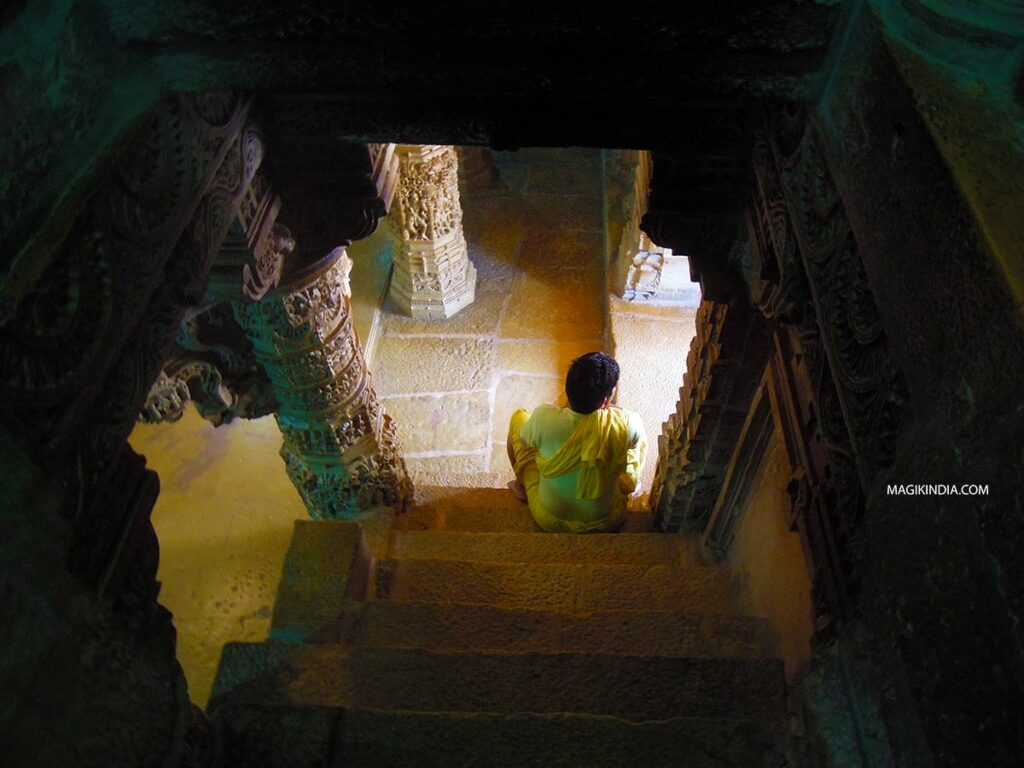
This temple is known for its intricate carvings. It is dedicated to the 10th Tirthankara of Jainism.
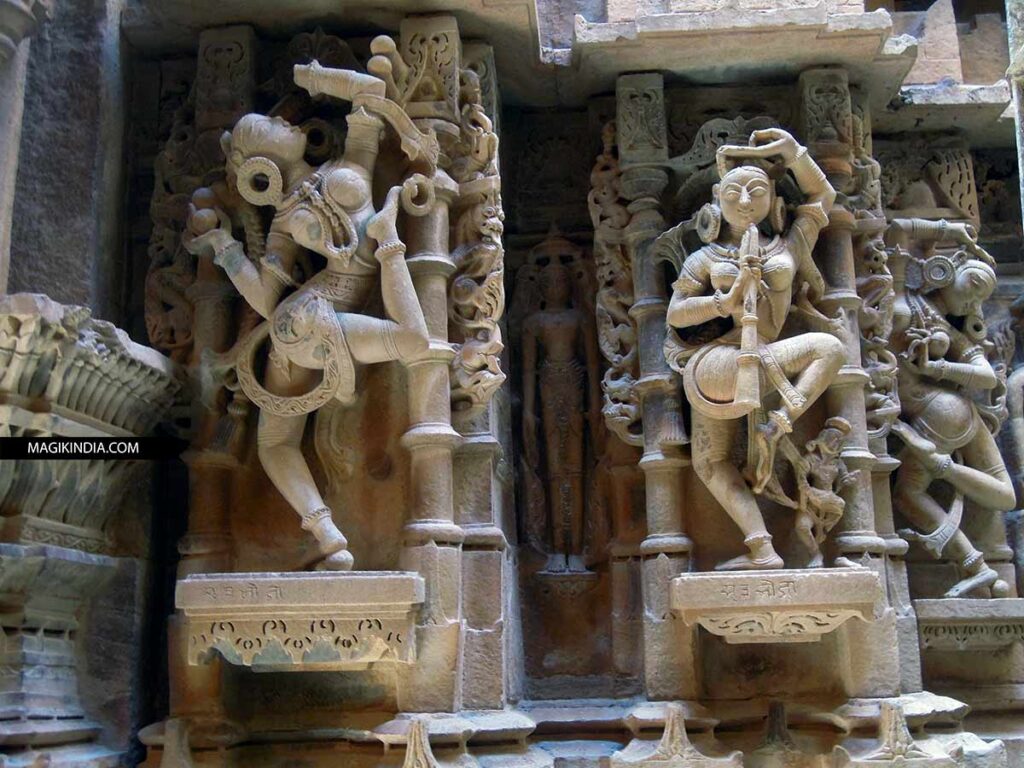
6 – Temple de Kunthunath

This temple is believed to have been built in the 15th century. It is dedicated to the 17th tirthankara, Kunthunatha.
7 – Shantinath
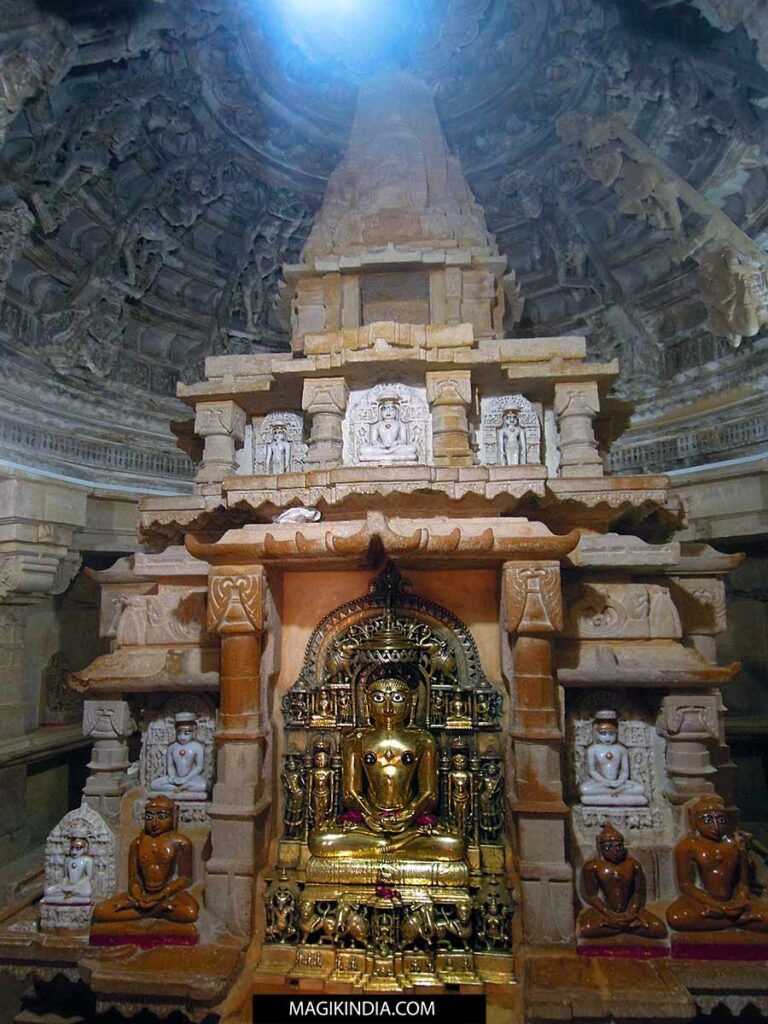
This temple is dedicated to the tenth Tirthankara Shantinath. He is often depicted as a golden statue with a deer at his feet. The sanctuary’s vault is openwork, allowing a stream of light to pass through; surely one of the most beautiful temples in the complex.
Practical information: Visit from 8 am to 12 pm only. The entrance fee to the Jain complex is 10 INR. Camera fee: 50 INR / Video: 100 INR.
Lodurva temple
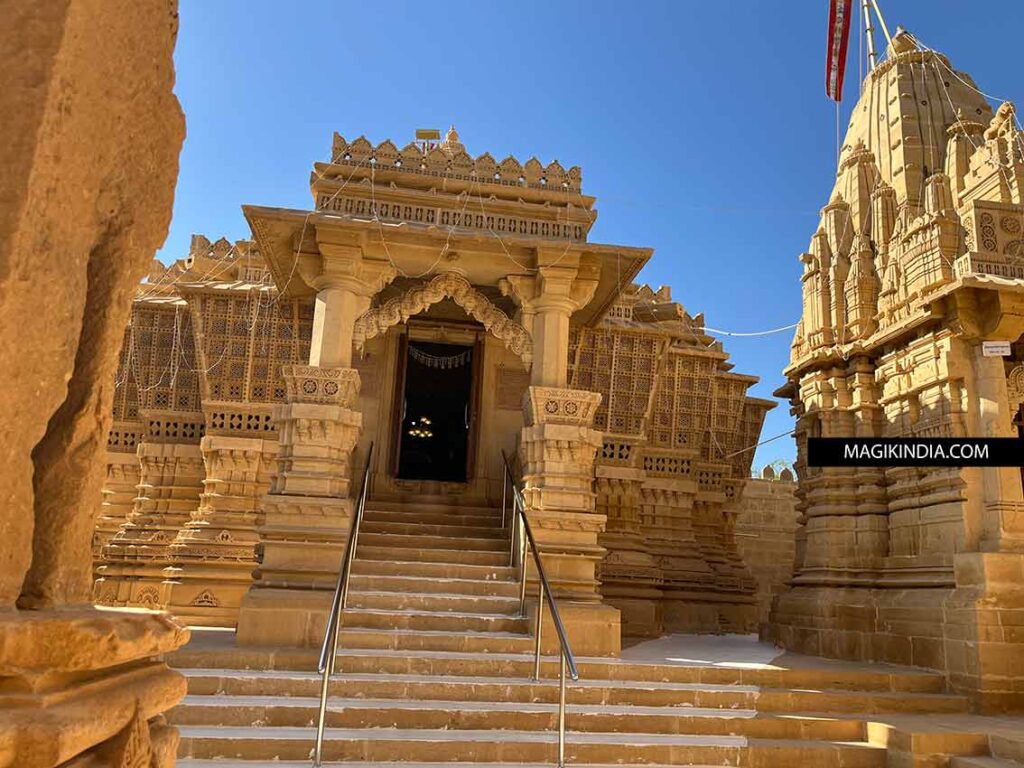
I confess that despite my dozens of visits to Jaisalmer, I only recently explored this temple. It had been on my bucket list for a long time, so I had high expectations… and I was not disappointed! This derasar adds to the long list of Jain wonders, but with a very different architecture from the others; in this respect, it is worth the detour.
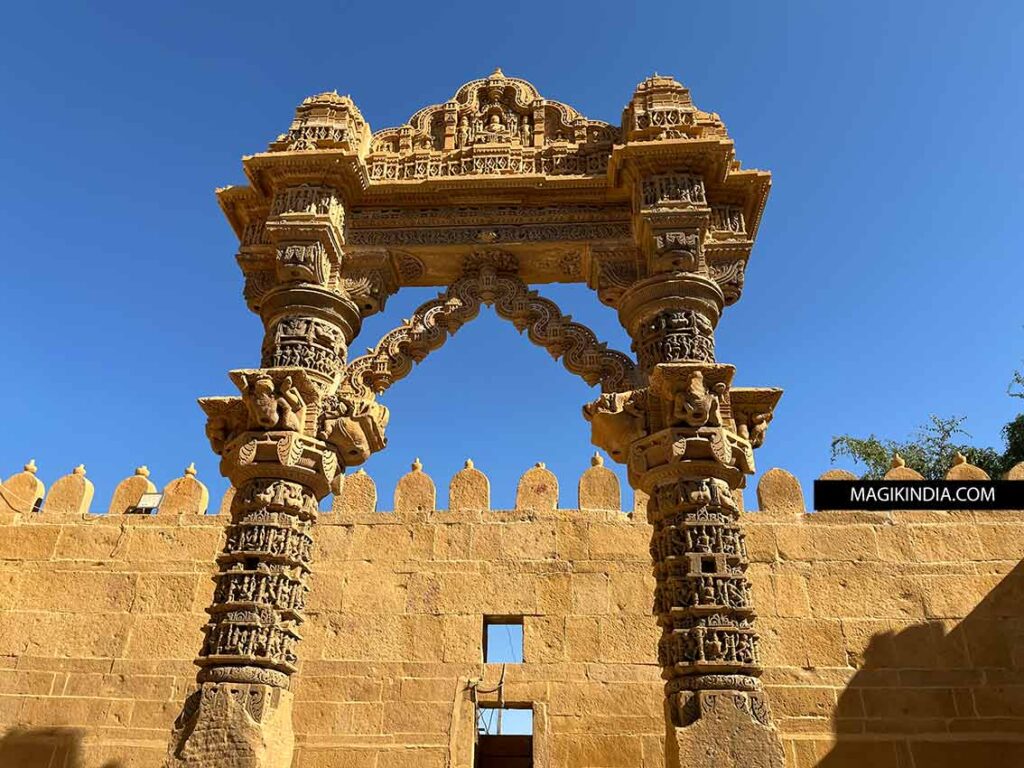
Located about twenty kilometers from Jaisalmer, this temple is the only remaining structure of Lodruva, the ancient capital of the Rajput Bhatti clan, built in the 8th and 9th centuries CE. It was built at the same time as the city. Lodruva was destroyed by Mughal invasions.

Built in yellow sandstone, it features, at the entrance, a splendid torana decorated with fine sculptures of various characters.
The distinctive feature of the Derasar lies in its jalis (carved stone screens) arranged in an accordion pattern around the main sanctuary. This gives the building a highly graphic appearance worthy of the best contemporary architecture.
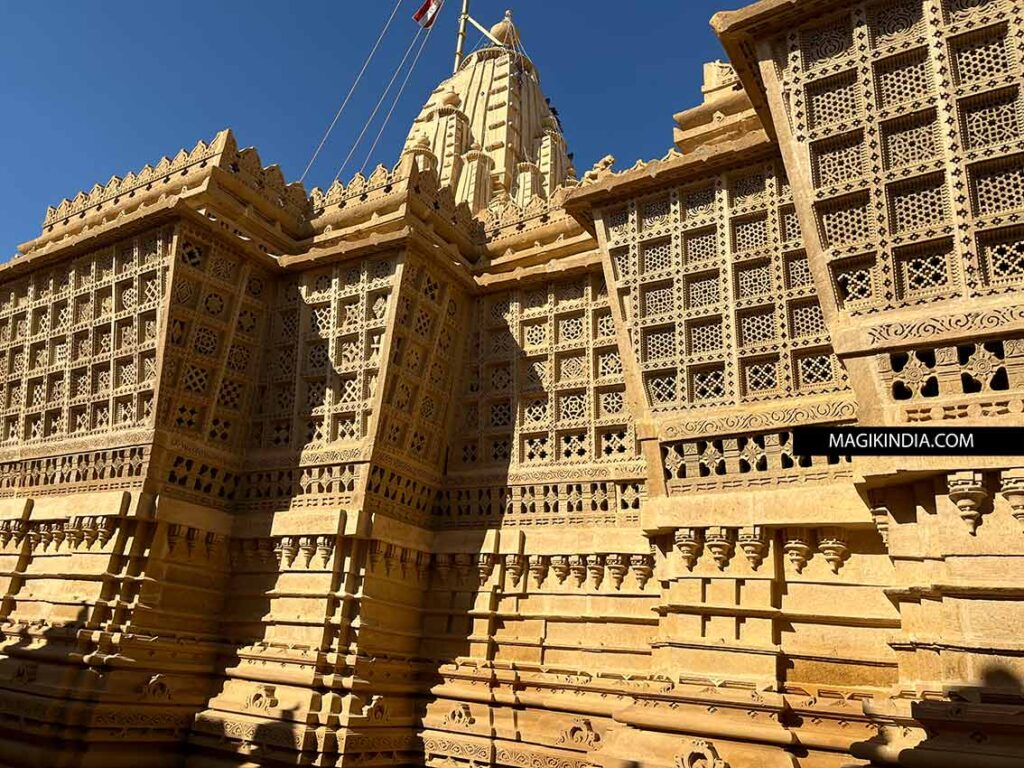
The mulnayak (principal deity) of the temple is a black marble idol of the 23rd Tirthankara, Shri Lodrava Parshvanatha with his serpent headdress.
According to Jain belief, a snake comes every evening to drink the milk offerings left at the feet of the statue.
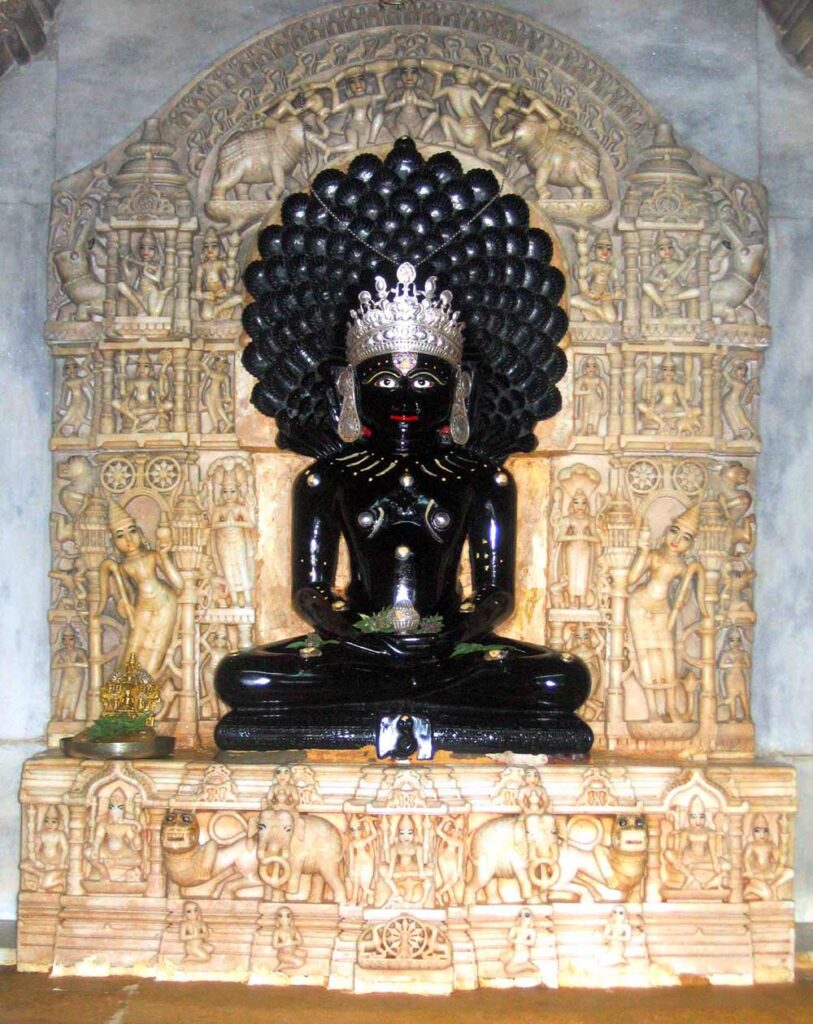
The building housing the Kalpavriksha, a divine wish-granting tree, also exhibits a specific architecture in the form of a pyramid, carved with sun motifs on the ends of the walls.
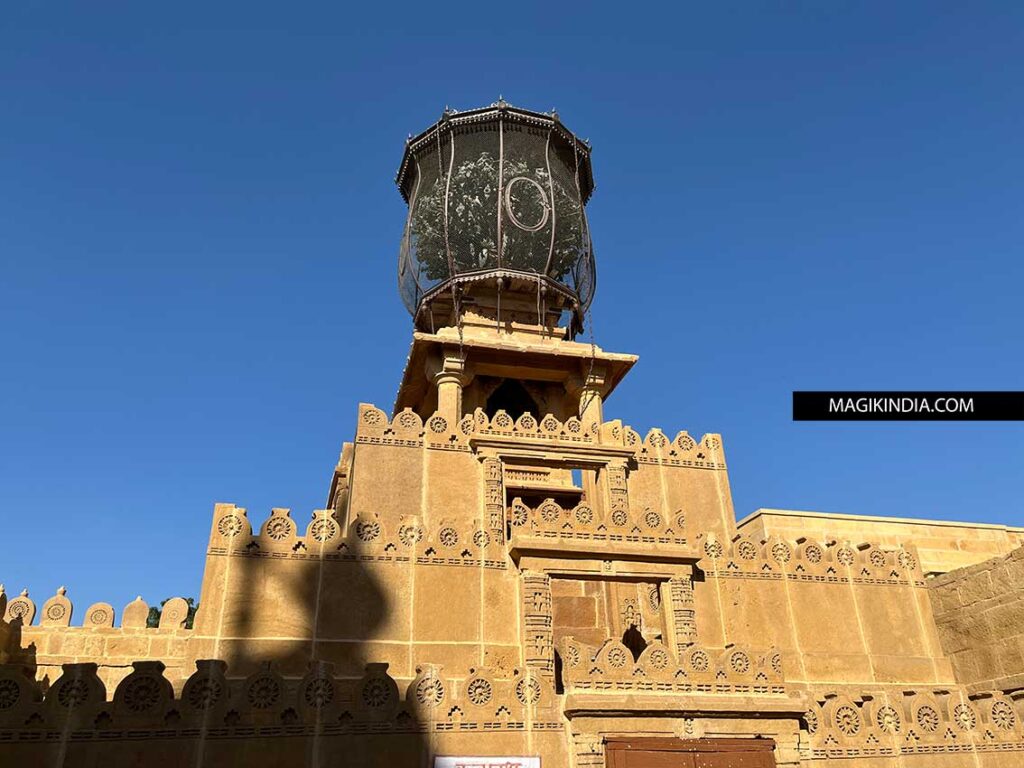
Amar Sagar
A few kilometers from Lodruva, we come across Amar Sagar, another very beautiful desert.
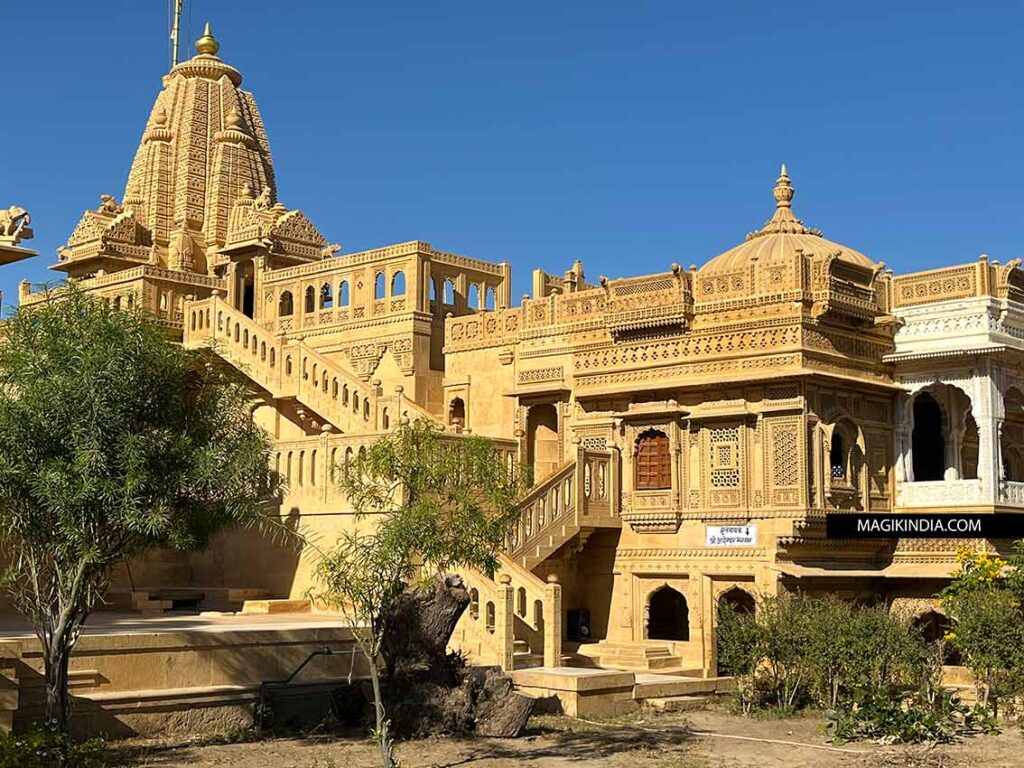
Built in 1928 by Patwa Seth Pratapchand Ji Bapna (the same family as the Patwon ki haveli) this Jain shrine is relatively recent; however, the idol of Adhinath, the first tirthankara, is said to date from the time of King Samprati.
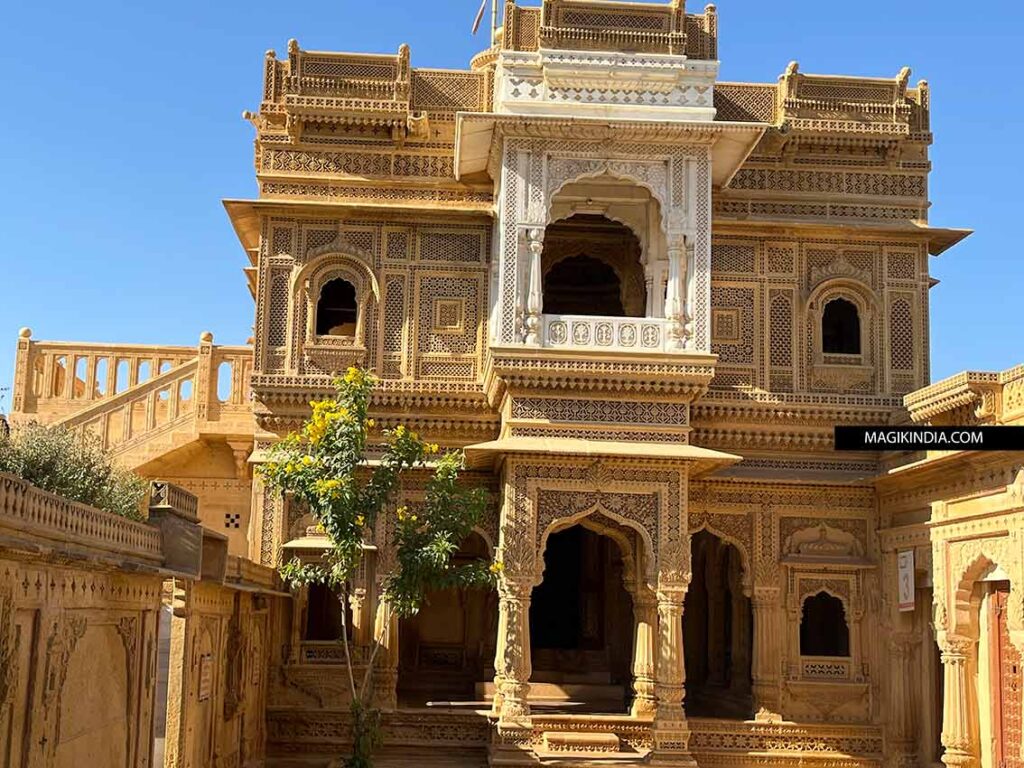
This two-story temple has the appearance of a small Rajput palace, with corbelled balconies and very fine jalis.
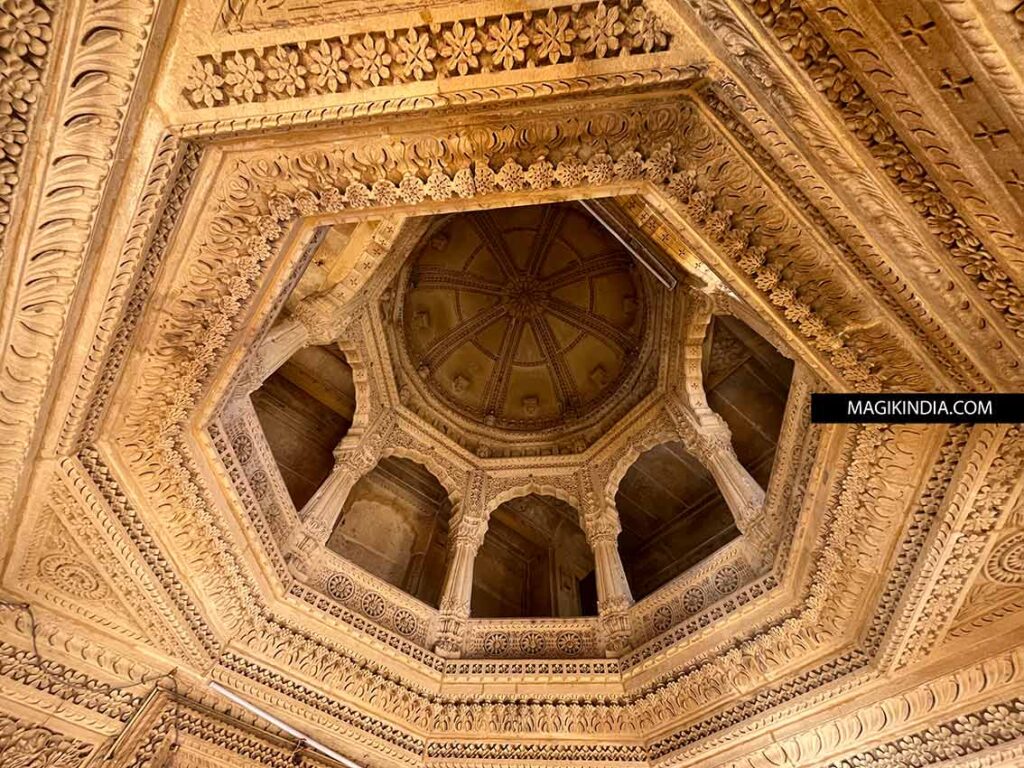
The temple sits on the banks of a lake which was dry when I visited and where there are two other derasars and a palace designed by Maharaja Akhai Singh in the 17th century to honor one of his ancestors.
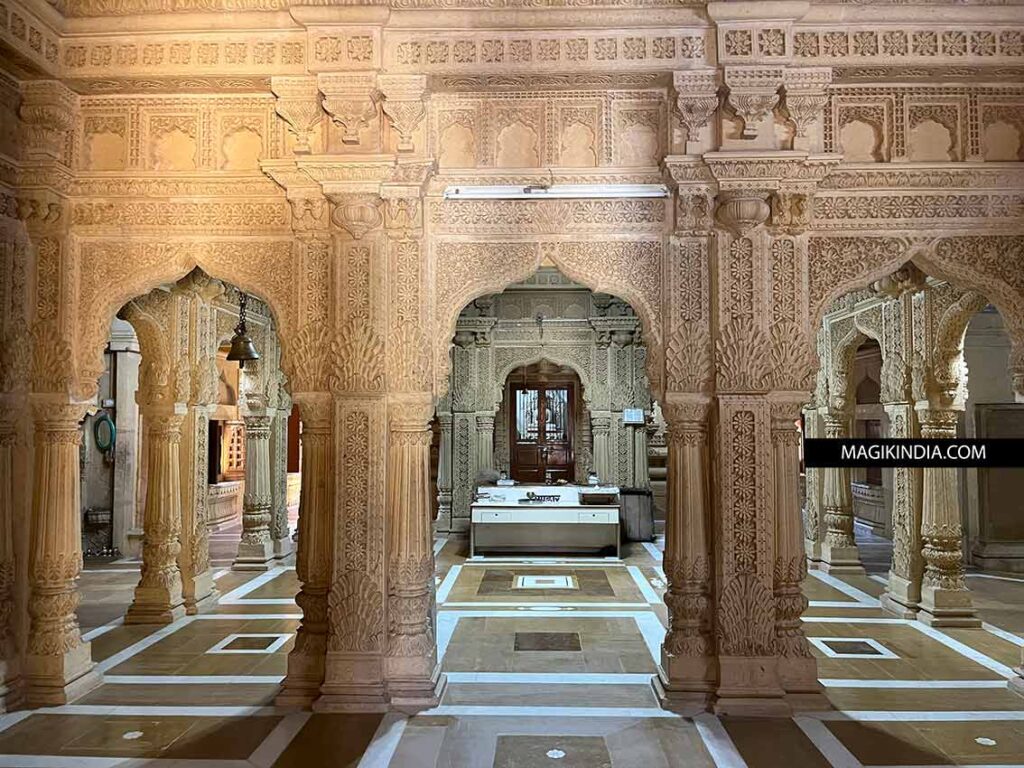
How to reach the temples ?
The temples are located approximately 15-17 kilometers northwest of Jaisalmer city in Rajasthan. Here’s how you can reach them from Jaisalmer by road :
- Taxi/Cab: This is the most convenient and readily available option. You can hire a taxi or a private cab from Jaisalmer city to Lodhruva. The journey takes around 20-30 minutes. Many drivers are familiar with the route, and it’s a comfortable way to travel.
- Auto-rickshaw: You can also hire an auto-rickshaw for a more budget-friendly option. However, negotiate the fare beforehand. The ride might be a bit less comfortable than a car, especially during hot weather.
- Local Bus: There might be local buses that go towards Lodhruva, but their frequency and direct connectivity might be limited. Enquire at the Jaisalmer bus stand for the availability and timings. This would be the most economical option but could take longer.
- Private Vehicle: If you have your own car or a rented vehicle, you can easily drive to Lodhruva. The roads are generally in good condition. You can use online maps for navigation; Lodhruva is well-marked.

